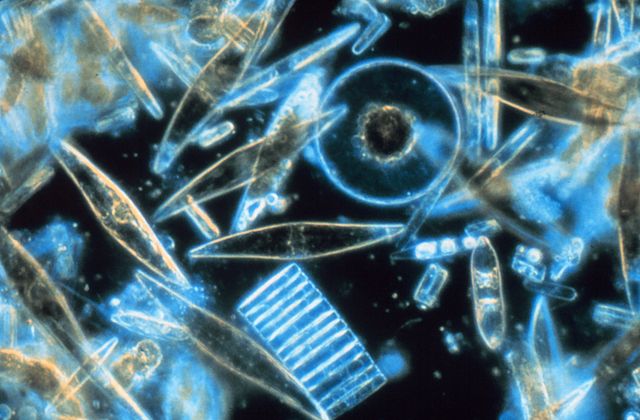Coccolithophores, or coccolithophorids, are single-celled organisms which are part of the phytoplankton, the autotrophic (self-feeding) component of the plankton community. They form a group of about 200 species, and belong either to the kingdom Protista, according to Robert Whittaker's five-kingdom system, or clade Hacrobia, according to a newer biological classification system. Within the Hacrobia, the coccolithophores are in the phylum or division Haptophyta, class Prymnesiophyceae. Coccolithophores are almost exclusively marine, are photosynthetic, and exist in large numbers throughout the sunlight zone of the ocean.
Coccolithophore
Satellite photograph: The milky blue colour of this phytoplankton bloom in Barents Sea strongly suggests it contains coccolithophores
A coccolithovirus, Emiliania huxleyi virus 86 (arrowed), infecting an Emiliania huxleyi coccolithophore. This giant marine virus has one of the largest known virus genomes.
Evolutionary history of coccolithophores: (A) Coccolithophore species richness over time; (B) The fossil record of major coccolithophore biomineralization innovations and morphogroups
Phytoplankton are the autotrophic (self-feeding) components of the plankton community and a key part of ocean and freshwater ecosystems. The name comes from the Greek words φυτόν, meaning 'plant', and πλαγκτός, meaning 'wanderer' or 'drifter'.
Some types of phytoplankton (not to scale) Left to right: cyanobacteria, diatom, dinoflagellate, green algae and coccolithophore
Diatoms are one of the most common types of phytoplankton
Coccolithophores are armour-plated
The dinoflagellate Dinophysis acuta








